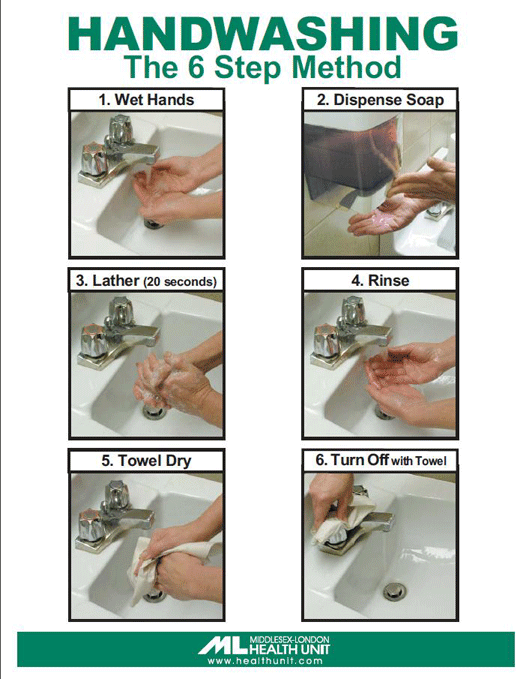Contact Us
For more information, please contact the Infectious Disease Control Team:
- 519-663-5317 Ext. 2330
 Norovirus Fact Sheet (PDF 254KB)
Norovirus Fact Sheet (PDF 254KB)For more information, please contact the Infectious Disease Control Team:
Anyone of any age can become sick from Norovirus. Infections and outbreaks are common in child care centers, nursing homes and other child and adult institutions where people live and work closely. It can spread easily within households.
The stool and vomit of an infected person contains large amounts of the virus, even before the person starts to feel ill. An infected person can spread the infection to co-workers, household members and others around them.
Norovirus illness can reoccur throughout a person’s lifetime. There are many different types of Norovirus and immunity to the virus is short-lived. A person can become infected with more than one type of Norovirus during a season of outbreaks.
The symptoms are similar to other gastrointestinal illnesses. You may have vomiting, watery diarrhea, abdominal cramps and nausea. This will happen suddenly, about 12 to 48 hours after the virus gets into your mouth, and usually lasts from 24 to 60 hours.
You may also get muscle aches, fatigue, headache, low-grade fever or chills, and a general unwell feeling. Children may have mild to moderate diarrhea without vomiting.
Most people feel better in 2 to 3 days without any serious health complications. It is important to drink liquids to prevent dehydration, especially in very young children, the elderly, and people with weakened immune systems. They may need medical attention.
The length of time the person is ill with Norovirus symptoms, together with the presence of similar illness in others in the same household, institution and community may suggest Norovirus infection. Laboratory testing is done to detect Noroviruses.
Norovirus infection can happen in several ways, including:
Noroviruses are very contagious. They can survive in the environment for at least 12 days. Some people, particularly children, can be infected and not show any symptoms, but still spread the infection to others.
When a person is infected, their feces (stool) and vomit can contain large amounts of the virus. They could excrete (shed) Norovirus for 5 to 7 days after the symptoms start or longer. Shedding can continue for as long as 3 weeks and longer in people with weakened immune systems.
Norovirus gets into the air when vomiting occurs. Virus particles can settle on food and surfaces in common dining areas, on other surfaces, and on carpets. You can become sick by touching those contaminated materials, surfaces or objects. The person cleaning up the vomit may get airborne virus particles in their mouth. Sweeping and vacuuming can spread the virus particles into the air.
Foods can be contaminated with Norovirus when the person preparing the food is shedding the virus and not washing their hands thoroughly.
You can get Norovirus infection by drinking water, other beverages and ice cubes that have come from a contaminated water source. This may happen during travel to other countries.
Swimming in contaminated pools and ponds, and eating raw vegetables, fruits and other foods grown in or near contaminated water are other sources of infection.
 The 6 Step Method of Handwashing (PDF 96KB)
The 6 Step Method of Handwashing (PDF 96KB)Wash laundry thoroughly. Immediately, carefully remove soiled clothes and linens without agitating them.
Wear rubber or disposable gloves, and wash your hands afterward.
Wash the items with detergent and hot water - heat above 60°C/140°F inactivates the Norovirus, at the maximum available cycle length, and machine dry.